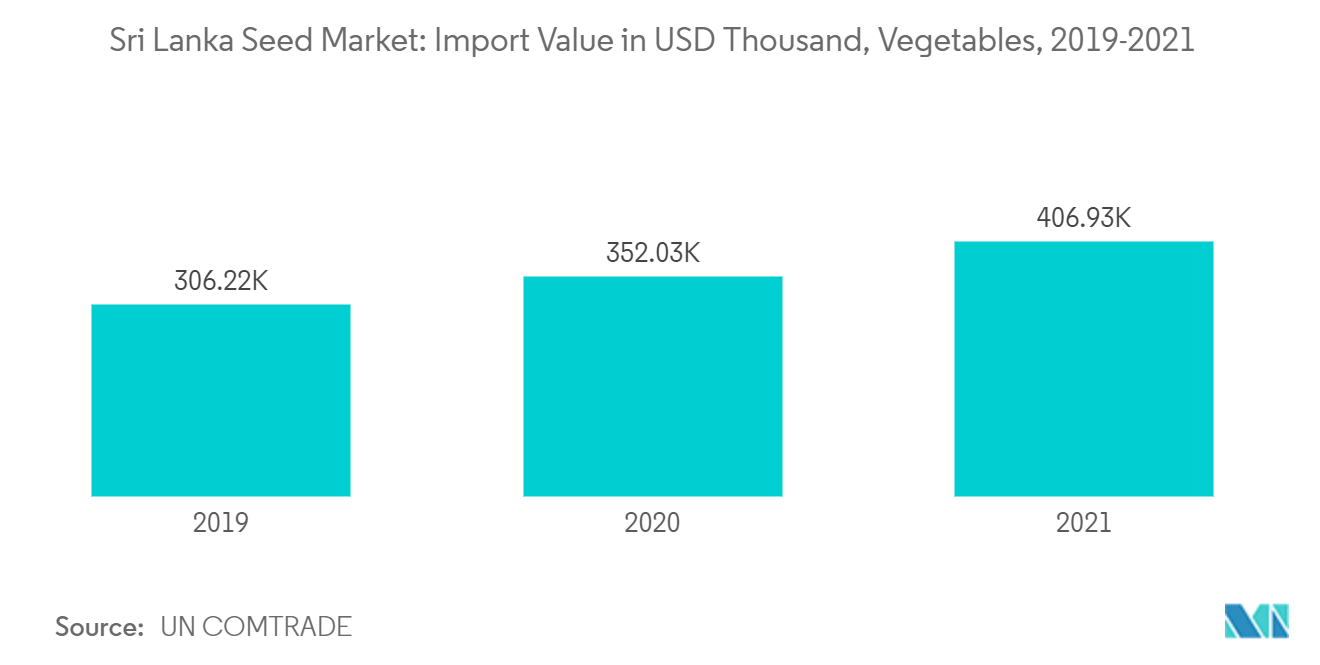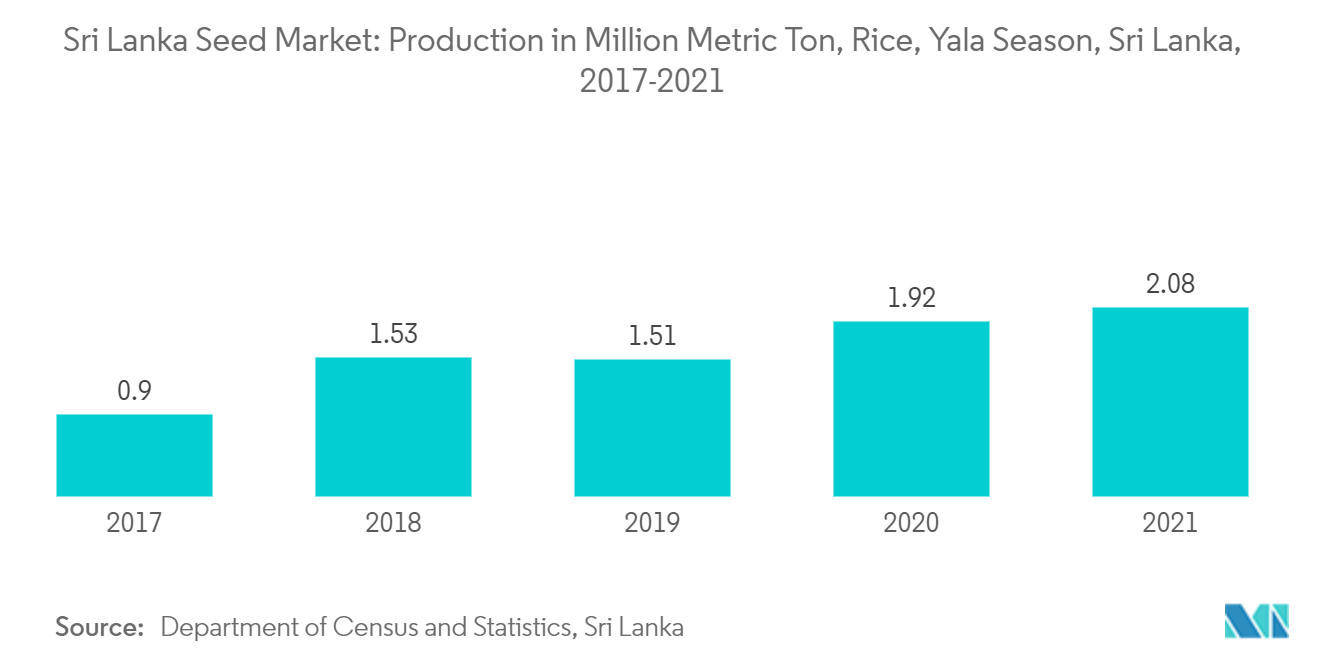Market Trends of Sri Lanka Seed Industry
This section covers the major market trends shaping the Sri Lanka Seed Market according to our research experts:
Growth Potential of the Vegetable Sector
The demand for vegetable seeds, especially in developing countries such as Sri Lanka, is still untapped and provides multinational corporations with various opportunities for expansion and a wide customer base. Countries are shifting toward adopting high-quality seeds due to the export potential of vegetable seeds on the global market. Most companies concentrate on hybrid vegetable seeds, largely backed by patents in this region. Most vegetable seeds are consumed and produced domestically.
Sri Lanka grows manifold vegetable varieties for domestic consumption and export purposes. Locally, vegetables are of central importance in the agriculture industry as they become a vital side dish to rice-based diets, a staple in Sri Lanka. Benefitting from the diverse agro-climate conditions of various regions, Sri Lanka grows numerous varieties of vegetable crops (around 40 species) in different parts of the country throughout the year. Subsequently, traditional cropping systems are now rarely spotted in Sri Lanka, and the majority of the vegetable production comes from commercial cultivations that utilize certified seeds.
In addition, the country is a net importer of vegetables. Vegetable imports into the country have increased by 15% in 2021, according to UN Comtrade. Sri Lanka, on the other hand, has been supplying a variety of vegetables to the world due to its suitable tropical climate and geography that suit a variety of agricultural crops. On top of Sri Lanka's climatic advantage, the fertile soils, the conventional wisdom handed down from generation to generation, the established agricultural facilities, irrigation systems, and distributed rainfall patterns are quite conducive to the cultivation of such crops. Therefore, the use of improved varieties of seeds in the sector could improve the net production of several vegetables and thus decrease the dependence on imports.

Rice Dominates the Cereals Market
Cereals have been an important part of the Sri Lankan diet. Rice, millet, maize, and sorghum are some of the cereal crops grown in Sri Lanka. Further, rice is the staple food of the vast majority of Sri Lankans, and at least two meals out of the three main meals consist of rice and curry. According to the Department of Agriculture, the rice crop occupies nearly 24% of the cultivable land, with the per capita consumption of rice standing at 114 kg per year and providing a livelihood for 1.8 million farmer families island-wide.
Further, rice production has increased in the country over the years. Yala and Maha are the two major rice production seasons in the country. According to the Department of Census and Statistics in Sri Lanka, the net paddy production was 4,710,211 metric tons in the country. According to the Department of Census and Statistics in Sri Lanka, the net paddy production was 4,710,211 metric tons in 2021, and the availability of raw rice was around 3,202,944 metric tons, including post-harvest loss for human consumption as food, beverages, and other industrial usages. The average yield is highest in the Hambantota district for both seasons, and the main reason is that the seed varieties (especially AT 362), which have been developed at the Ambalantota Paddy Research Institute, have been used for the cultivation. Additionally, the government of Sri Lanka (GOSL) and health authorities actively encourage rice consumption over wheat consumption. Red rice is gaining popularity as its grain and bran become recognized for their better nutritional qualities since they are rich in vitamin B, minerals, protein, fat, and fiber. With the ever-increasing demand for rice in the country in terms of domestic demand as well as exports, rice seeds play a key role in the Sri Lanka seed market.

